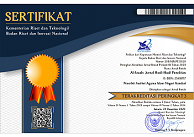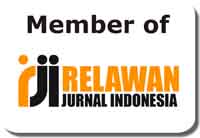A Qualitative Study of Teachers’ Perceptions of Children’s Physical Activity and Learning in Preschool
Abstract
Abstract
The aimed of this research is to examine teachers’ perception of physical activity that can indicate the level of physical activities displayed in children’s classroom. Semi-formal interviews were conducted with six early childhood teachers. Results of the study indicated that early childhood teachers used physical activity to promote the learning materials. The teachers stated that through their physical activities, children might develop a better comprehension of academic concepts. The teachers also reported that children’s positive attitudes improved when physical activity was undertaken, particularly evidenced by an increase in children’s confidence and enthusiasm during the learning process. However, inadequate opportunity to include physical activity in preschool due to limited equipment, deterred teachers from truly facilitating the physical activities of children. The teachers were also concerned that their ability and understanding to accommodate physical activity may not be adequate for the children. Therefore, underpinning the teacher’s role with training may be required in order to cover the children’s needs to actively engage in physical activities as mentioned in curriculum.
Keywords
Full Text:
PDFReferences
Cashmore, Aaron W., and Sandra C. Jones. 2008. “Growing up Active: A Study into Physical Activity in Long Day Care Centers.” Journal of Research in Childhood Education 23 (2): 171–91. https://doi.org/10.1080/02568540809594654.
Cresswell J. W. (2014). Educational research: Planning, conducting and evaluating qualitative and quantitative research (4th edn.). London: Licensing Agency Ltd
Fang, Hui, Minghui Quan, Tang Zhou, Shunli Sun, Jiayi Zhang, Hanbin Zhang, Zhenbo Cao, Guanggao Zhao, Ru Wang, and Peijie Chen. 2017. “Relationship between Physical Activity and Physical Fitness in Preschool Children: A Cross-Sectional Study.” BioMed Research International 2017. https://doi.org/10.1155/2017/9314026.
Fuller, Bruce, Edward Bein, Margaret Bridges, Yoonjeon Kim, and Sophia Rabe-Hesketh. 2017. “Do Academic Preschools Yield Stronger Benefits? Cognitive Emphasis, Dosage, and Early Learning.” Journal of Applied Developmental Psychology 52 (October 2016): 1–11. https://doi.org/10.1016/j.appdev.2017.05.001.
Gagen, Linda M., and Nancy Getchell. 2006. “Using ‘constraints’ to Design Developmentally Appropriate Movement Activities for Early Childhood Education.” Early Childhood Education Journal 34 (3): 227–32. https://doi.org/10.1007/s10643-006-0135-6.
Gehris, J. S., R. A. Gooze, and R. C. Whitaker. 2015. “Teachers’ Perceptions about Children’s Movement and Learning in Early Childhood Education Programmes.” Child: Care, Health and Development 41 (1): 122–31. https://doi.org/10.1111/cch.12136.
Hujala, Eeva. 2008. “The Development of Early Childhood Education as an Academic Discipline in Finland.” Tidsskrift for Nordisk Barnehageforskning 1 (1): 17–23. https://doi.org/10.7577/nbf.238.
Indonesia, kementerian pendidikan dan kebudayaan Republik. 2014. “Buku Panduan Pendidik Kurikulum 2013,” 4.
Lu, Chunlei, and Brandi Montague. 2016. “Move to Learn, Learn to Move: Prioritizing Physical Activity in Early Childhood Education Programming.” Early Childhood Education Journal 44 (5): 409–17. https://doi.org/10.1007/s10643-015-0730-5.
Martyniuk, Olivia Jm, and Patricia Tucker. 2014. “An Exploration of Early Childhood Education Students’ Knowledge and Preparation to Facilitate Physical Activity for Preschoolers: A Cross-Sectional Study.” BMC Public Health 14 (1): 1–10. https://doi.org/10.1186/1471-2458-14-727.
Reilly, John J. 2010. “Low Levels of Objectively Measured Physical Activity in Preschoolers in Child Care.” Medicine and Science in Sports and Exercise 42 (3): 502–7. https://doi.org/10.1249/MSS.0b013e3181cea100.
Rismayanthi, Cerika. 2013. “Mengembangkan Keterampilan Gerak Dasar Sebagai Stimulasi Motorik Bagi Anak Taman Kanak-Kanak Melalui Aktivitas Jasmani.” Jurnal Pendidikan Jasmani Indonesia 9 (1): 64–72. https://doi.org/10.21831/JPJI.V9I1.3065.
Rosyid Ridho, Markhamah, and Darsinah. 2015. “Pengelolaan Pembelajaran Pendidikan Anak Usia Dini (Paud) Di Kb ‘Cerdas’ Kecamatan Sukorejo Kabupaten Kendal.” Jurnal Penelitian Humaniora 16 (02): 59–69.
Sevimli-Celik, Serap, Sadettin Kirazci, and Mustafa Levent Ince. 2011. “Preschool Movement Education in Turkey: Perceptions of Preschool Administrators and Parents.” Early Childhood Education Journal 39 (5): 323–33. https://doi.org/10.1007/s10643-011-0473-x.
Vanderloo, Leigh M, Patricia Tucker, Andrew M Johnson, Shauna M Burke, and Jennifer D Irwin. 2015. “Environmental Influences on Preschoolers ’ Physical Activity Levels in Various Early-Learning Facilities,” 360–70. https://doi.org/10.1080/02701367.2015.1053105.
Williams, Kate E. 2018. “Moving to the Beat: Using Music, Rhythm, and Movement to Enhance Self-Regulation in Early Childhood Classrooms.” International Journal of Early Childhood 50 (1): 85–100. https://doi.org/10.1007/s13158-018-0215-y.
Zeng, Nan, Mohammad Ayyub, Haichun Sun, Xu Wen, Ping Xiang, and Zan Gao. 2017. “Effects of Physical Activity on Motor Skills and Cognitive Development in Early Childhood: A Systematic Review.” BioMed Research International 2017. https://doi.org/10.1155/2017/2760716.
DOI: http://dx.doi.org/10.31332/ai.v14i2.1524
Copyright (c) 2019 Al-Izzah: Jurnal Hasil-Hasil Penelitian

This work is licensed under a Creative Commons Attribution-NonCommercial-ShareAlike 4.0 International License.










